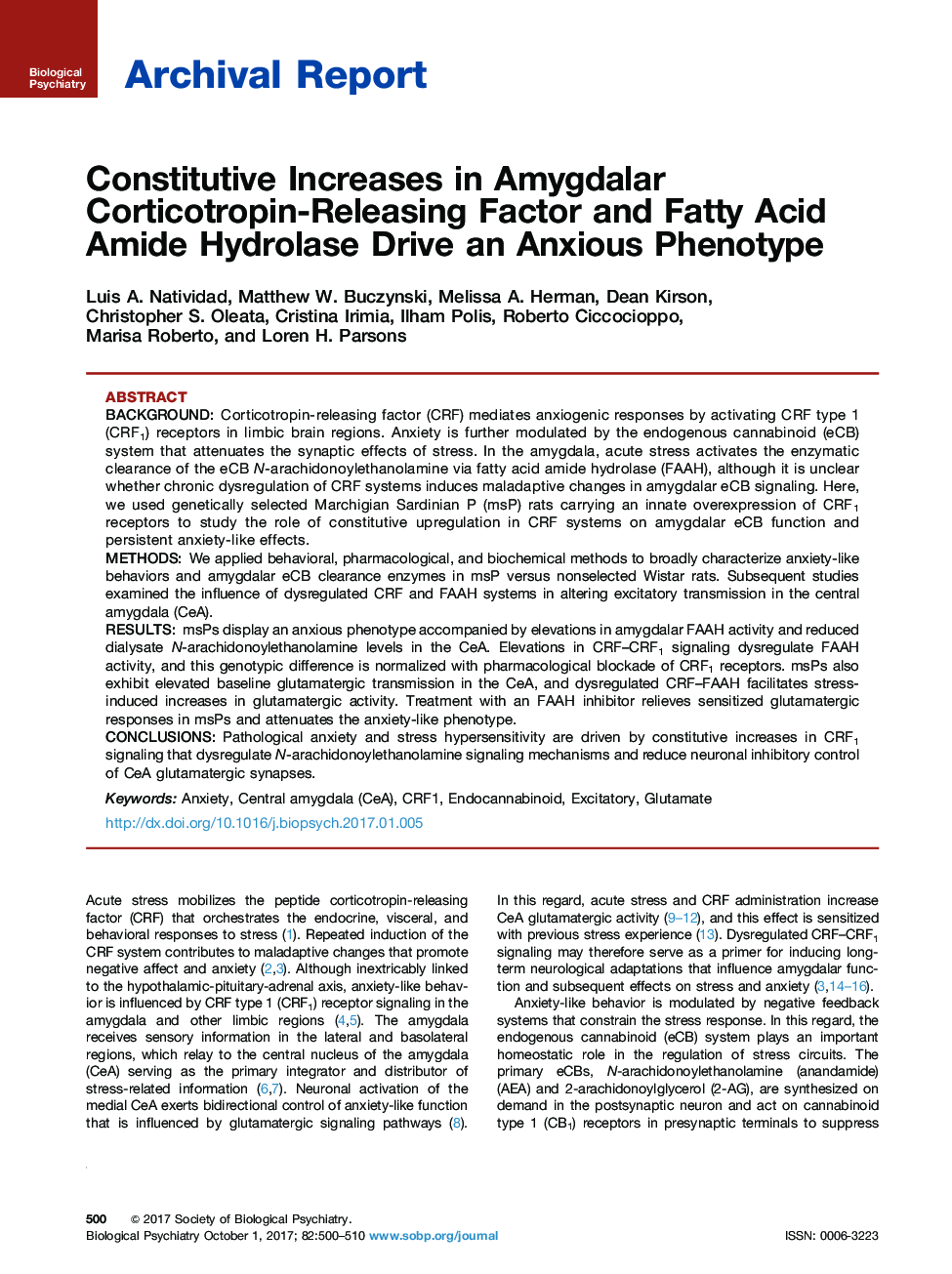| کد مقاله | کد نشریه | سال انتشار | مقاله انگلیسی | نسخه تمام متن |
|---|---|---|---|---|
| 5720546 | 1411317 | 2017 | 11 صفحه PDF | دانلود رایگان |

BackgroundCorticotropin-releasing factor (CRF) mediates anxiogenic responses by activating CRF type 1 (CRF1) receptors in limbic brain regions. Anxiety is further modulated by the endogenous cannabinoid (eCB) system that attenuates the synaptic effects of stress. In the amygdala, acute stress activates the enzymatic clearance of the eCB N-arachidonoylethanolamine via fatty acid amide hydrolase (FAAH), although it is unclear whether chronic dysregulation of CRF systems induces maladaptive changes in amygdalar eCB signaling. Here, we used genetically selected Marchigian Sardinian P (msP) rats carrying an innate overexpression of CRF1 receptors to study the role of constitutive upregulation in CRF systems on amygdalar eCB function and persistent anxiety-like effects.MethodsWe applied behavioral, pharmacological, and biochemical methods to broadly characterize anxiety-like behaviors and amygdalar eCB clearance enzymes in msP versus nonselected Wistar rats. Subsequent studies examined the influence of dysregulated CRF and FAAH systems in altering excitatory transmission in the central amygdala (CeA).ResultsmsPs display an anxious phenotype accompanied by elevations in amygdalar FAAH activity and reduced dialysate N-arachidonoylethanolamine levels in the CeA. Elevations in CRF-CRF1 signaling dysregulate FAAH activity, and this genotypic difference is normalized with pharmacological blockade of CRF1 receptors. msPs also exhibit elevated baseline glutamatergic transmission in the CeA, and dysregulated CRF-FAAH facilitates stress-induced increases in glutamatergic activity. Treatment with an FAAH inhibitor relieves sensitized glutamatergic responses in msPs and attenuates the anxiety-like phenotype.ConclusionsPathological anxiety and stress hypersensitivity are driven by constitutive increases in CRF1 signaling that dysregulate N-arachidonoylethanolamine signaling mechanisms and reduce neuronal inhibitory control of CeA glutamatergic synapses.
Journal: Biological Psychiatry - Volume 82, Issue 7, 1 October 2017, Pages 500-510